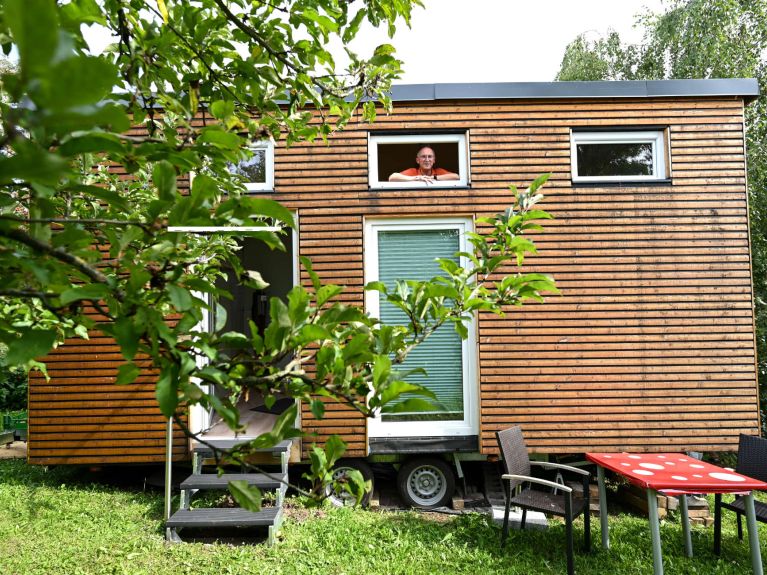Small and flexible
What will our homes be like in the future? Here are three especially economical examples that require very little space.

Building for tomorrow is not only bound up with the question “How should we build?” – with innovative sustainable and climate-friendly materials, of course – but also with the question of “What should we build?”: tiny houses, single-family homes or apartment blocks? We outline three interesting ideas that also save space, a scarce resource in German cities.
Versatile microhome
Today’s cities already need to house lots of people in very little space. A German ideas factory called Certain Measures has developed a futuristic concept with the Swiss Federal Railways (SBB). The SBB Autonomous Home consists of an extremely flexible space with sleeping area and toilet. Its heart, however, is the attached storage core, where elements like a cooker or shower as well as furniture, such as tables, chairs or sofas, are kept and can be automatically moved into the room when needed. That is how the space transforms itself from a bathroom into a dining, working or living room.

Shared accommodation is the future
Long popular among students, shared housing has only recently attained the status of a forward-looking concept in Germany under the name “collaborative living”. It entails sharing as many communal rooms as possible in apartments or houses while having little private space for yourself. Depending on requirements, whether it involves shared housing for seniors or accommodation where families or several generations live together, the shared space can be just a few communal areas or all of them with the exception of one private room. In any event, compared with the normal German home (several rooms, kitchen, bathroom) it saves lots of space and substantially reduces percapita energy consumption.
Tiny home
Tiny houses have been popular for many years. They are now also available as luxurious newbuilds, but originally they involved very simple dwellings, refurbished construction trailers or recycled containers. They all have the limited floor space of a home with a maximum area of 45 square metres. Nevertheless, this concept is less suitable for urban areas, unless containers are stacked on top of one another. Otherwise these small houses use more space that microapartments in housing blocks because of the land area they require.
You would like to receive regular information about Germany? Subscribe here:


